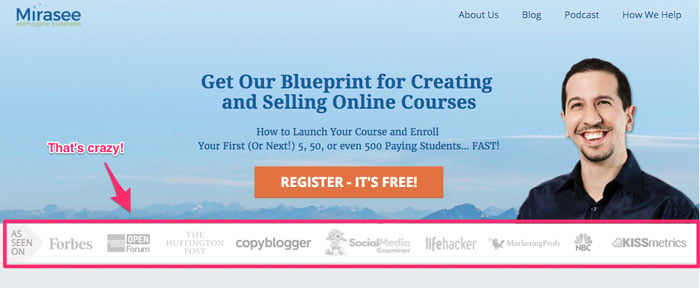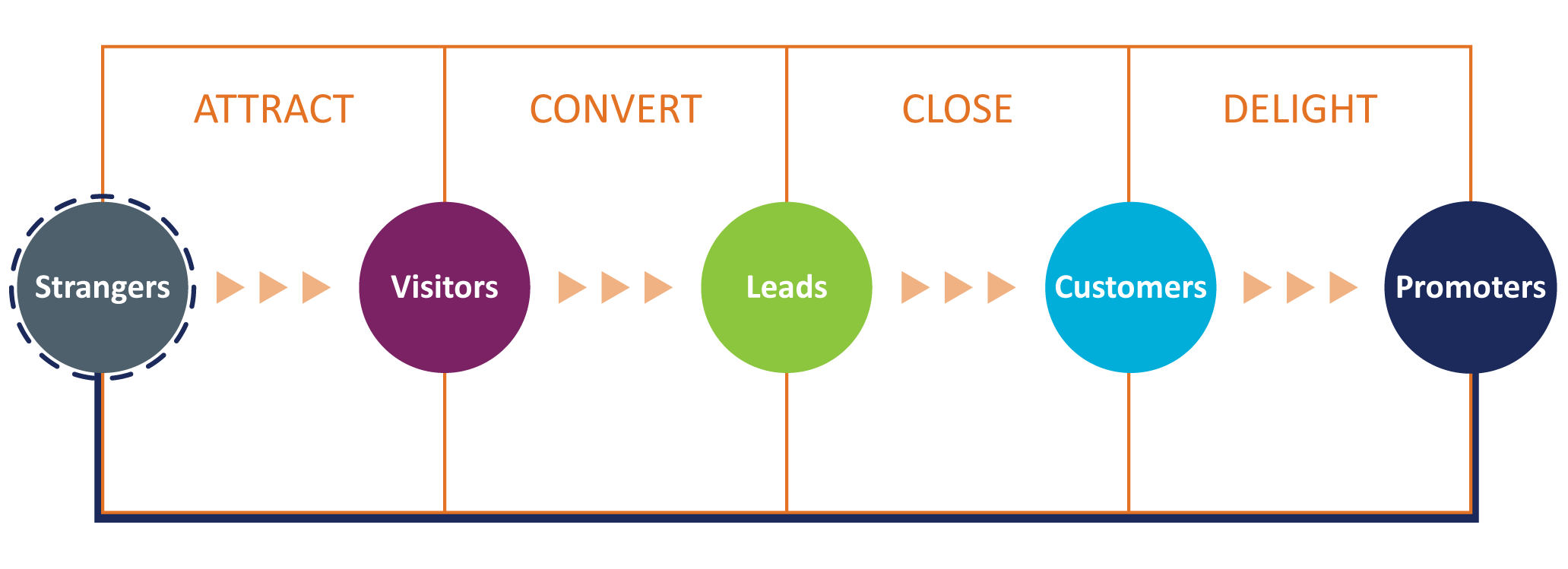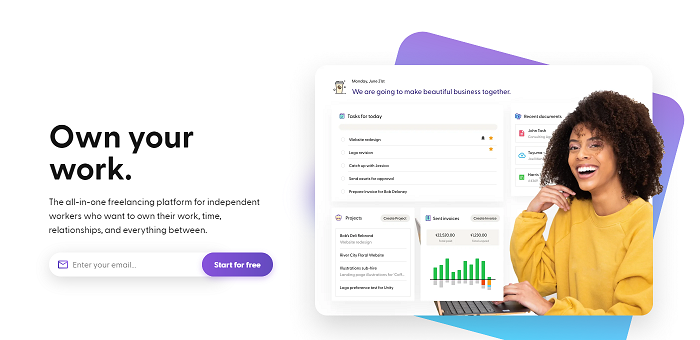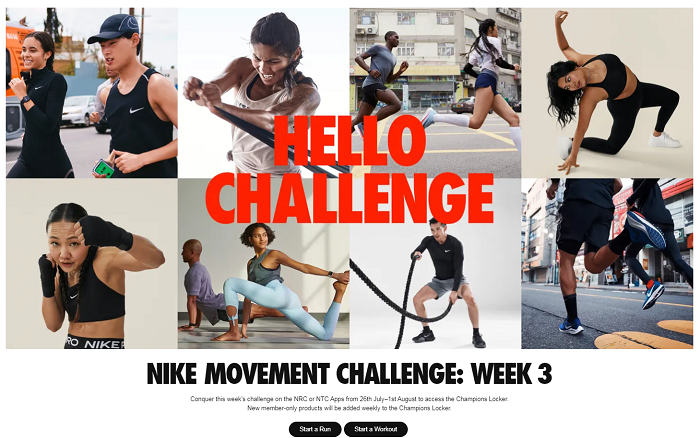Inbound marketing is for everyone who wants to build deeper, more engaged relationships with their customers. If you’re aware of common questions that your target audience frequently asks, inbound marketing content is the best way to answer them.
Inbound Marketing
What is inbound marketing?
Inbound marketing, in simple terms, is the process of helping potential customers find your company. This frequently happens before the customer is even ready to make a purchase, but making contact early can turn into brand preference and, ultimately, leads and revenue. Inbound marketing is a strategy that utilizes many forms of pull marketing—content marketing, blogs, events, search engine optimization (SEO), social media, and more—to create brand awareness and attract new business. Whereas outbound marketing seeks out customers, inbound marketing focuses on visibility, so potential buyers come to you. Instead of “renting attention,” companies employing inbound marketing focus on new methods geared toward building awareness, developing relationships, and generating leads.
These methods make you attractive to customers because they don’t make people feel like they’re being sold to. The content provided by inbound marketing is educational, entertaining, and welcomed by consumers. When done correctly, inbound marketing can return dramatically better results than traditional marketing that disrupts prospects rather than giving them an open invitation to engage. When consumers find your company this way, it has a stronger influence on their future marketing decisions and their feelings toward your business in general. The best part? Inbound marketing consists of entirely organic leads, so it relies on brains rather than budget.
Inbound marketing has the powerful ability to put customers in the driver’s seat, connecting you with people who are genuinely interested in what you have to say. Aside from lead conversions and customer retention, inbound marketing can do wonders for social media shares, brand awareness, and search engine optimization efforts. A robust inbound marketing program allows customers to engage with your brand at any time. This allows you to generate qualified leads for much less money than traditional marketing. As the creation of data continues to increase—according to IBM, we create 2.6 quintillion bytes of data per day—information abundance and attention scarcity will only continue to climb. The empowered buyer has all the information they need to make a buying decision at their fingertips any time, any place. Detail specs, pricing, and product/service reviews are right in their pocket, not to mention social media’s impact on information sharing. In order to be successful in this evolving landscape, visibility through inbound marketing is key.
"Inbound marketing is so powerful because you have the power to give the searcher/consumer exactly what answers they are looking for at the precise point that they need it. That builds trust, reputation, and authority in whatever niche you are practicing this form of marketing in.”
Common problems that inbound marketing can solve
Problem: I need to increase my brand awareness . Up to 93% of buying cycles start with an online search. If your company appears at the top of search results, or is active on a searcher’s social network, you can organically increase your brand awareness. To do that, you must make sure you have the right content and messaging in place to show up in these key inbound channels.
Problem: I want to improve my brand preference . By educating, entertaining, and interacting with potential customers before they are thinking about making a purchase, you build trust and increase the likelihood that they will choose you when they are ready to buy. Never underestimate the impact of becoming a familiar face.
Problem: I need to generate more leads but have less to invest. Inbound marketing is a long-term investment that builds on itself over time. Your results will multiply many times over as you become more adept at creating and curating content that naturally attracts organic leads.
Problem: I’m not sure I have the staff or budget to do inbound marketing. Like many things, the more you put into inbound efforts, the more you’ll get out of it. But, if you have a good strategy in place that outlines key themes, content, and distribution, you can make sure to avoid wasted efforts.
What Is the Flywheel?
On the other hand, anything that slows your flywheel is friction. Often the biggest sources of friction for your customers come in the handoffs between teams, so alignment and communication between teams are key to keeping your flywheel spinning.
When your flywheel is based on the inbound methodology, your marketing, sales, and service functions can add force and eliminate friction throughout the attract, engage, and delight phases. All organizational functions are also responsible for removing friction from your flywheel.
For example, in the attract phase, marketing will likely play the biggest role by doing things like blogging, event marketing, and running paid ads, but your sales team can also add force by engaging in social selling, and your customer service team can add force by making it easier for current customers to make referrals.
Once you attain enough customers and engage and delight them, they can keep your flywheel spinning by promoting your organization and bringing new customers to you. Over time, your flywheel allows you to grow without continually investing in customer acquisition.
Inbound Marketing Strategies
These strategies will help you effectively market to your target audience the inbound way. Below, you’ll see there are specific strategies for each inbound method of attracting, engaging, and delighting consumers to keep your flywheel spinning and help your business grow better.
Attracting Strategies
To reach your audience, start by creating and publishing content — such as blog articles, content offers, and social media — that provide value. Examples include guides on how to use your products, information about how your solution can solve their challenges, customer testimonials, and details about promotions or discounts.
To attract your audience members on a deeper level through inbound marketing, optimize all of this content with an SEO strategy. An SEO strategy will require you to target specific keywords and phrases related to your products or services, the challenges you solve for customers, and the ways you help target audience members.
This will allow your content and information to organically appear on the search engine results page (SERP) for the people who are searching for this information — also known as your target audience or the right customers for your business.
Engaging Strategies
When using inbound strategies to engage your audience, ensure you’re communicating and dealing with leads and customers in a way that makes them want to build long-term relationships with you. When using these engagement strategies, inject information about the value your business will provide them with.
Specific engagement strategies may include how you handle and manage your inbound sales calls. Focus on how customer service representatives handle calls from interested people and prospects. Additionally, be sure you’re always solution selling rather than product selling. This will ensure all deals end in mutually beneficial agreements for customers and your business — meaning, you provide value for your right-fit customers.
Delighting Strategies
Delighting inbound strategies ensure customers are happy, satisfied, and supported long after they make a purchase. These strategies involve your team members becoming advisors and experts who assist customers at any point in time.
Incorporating thoughtful, well-timed chatbots and surveys to assist, support, and request feedback from customers is a great way to delight these people. Bots and surveys should be shared at specific points in time throughout the customer’s journey to ensure they make sense and are of value.
For example, chatbots may help current customers set up a new technique or tactic you’ve started offering that they’d like to take advantage of. Additionally, a satisfaction survey may be sent out six months after customers have purchased your product or service to get their feedback and review ideas for improvement.
Social media listening is another important strategy when it comes to delighting customers. Social media followers may use one of your profiles to provide feedback, ask questions, or share their experience with your products or services. Respond to these interactions with information that helps, supports, and encourages followers — this shows you hear and care about them.
Lastly, the mark of an inbound strategy focused on delighting customers is one that assists and supports customers in any situation, whether or not your business gets any value out of it. Remember, a delighted customer becomes a brand advocate and promoter, so handle all interactions, both big and small, with care.
Sources:
https://www.marketo.com/inbound-marketing/
https://www.hubspot.com/inbound-marketing
https://www.salesforce.com/resources/articles/inbound-marketing/
Inbound marketing
Get it right and put some budget into the mix, too, and inbound marketing can vastly accelerate your business’s growth potential. How do we know? Because we do it every day and write about our experiences on a regular basis.
The Inbound Marketing Methodology
ATTRACT
strangers
ATTRACT
We want to attract the right strangers (your target persona) to your website and to your brand with quality, compelling content that answers the questions they have. We’ll use blogging, social media, keyword and SEO strategy, and even outbound advertising to do this.
CONVERT
visitors
CONVERT
With optimized landing pages, forms, and compelling calls-to-action we’ll convert these visitors into qualified leads. Contact information is the most valuable currency there is to the online marketer so we’ll give them premium content in exchange for it. This includes eBooks, whitepapers, infographics, webinars, case studies, and tips sheets.
CLOSE
leads
CLOSE
With the help of tools like lead scoring, closed-loop reporting, lead nurturing, and vast lead intelligence, paired with lead follow up best practices and sales tactics, you’ll then work to transform those leads into new business.
DELIGHT
customer
promoters
DELIGHT
This sometimes overlooked component of inbound marketing can be your secret weapon in ensuring referrals and renewals. Once someone becomes a customer, you don’t want to forget about them, and you’ll continue to publish and share content that helps them better use your product or services and delight them as a partner and thought leader.
The Inbound Marketing Methodology
ATTRACT
We want to attract the right strangers (your target persona) to your website and to your brand with quality, compelling content that answers the questions they have. We’ll use blogging, social media, keyword and SEO strategy, and even outbound advertising to do this.
CONVERT
With optimized landing pages, forms, and compelling calls-to-action we’ll convert these visitors into qualified leads. Contact information is the most valuable currency there is to the online marketer so we’ll give them premium content in exchange for it. This includes eBooks, whitepapers, infographics, webinars, case studies, and tips sheets.
CLOSE
With the help of tools like lead scoring, closed-loop reporting, lead nurturing, and vast lead intelligence, paired with lead follow up best practices and sales tactics, you’ll then work to transform those leads into new business.
DELIGHT
This sometimes overlooked component of inbound marketing can be your secret weapon in ensuring referrals and renewals. Once someone becomes a customer, you don’t want to forget about them, and you’ll continue to publish and share content that helps them better use your product or services and delight them as a partner and thought leader.
What Is the Purpose of Inbound Marketing? Why is it Important?
This strategy can also increase customer trust. More than 80 percent of customers conduct online research before deciding what to buy. If you present your company as an authoritative source in your industry, users may be more likely to pick you.
Chewy
Chewy’s homepage shows up as one of the top results if you type “cat food” or “bird food” in the Google search bar. If you study their website copy, you’ll notice how their team has optimized their content to reach more users through SEO.
Indy
Indy, a freelancing platform with resources for independent contractors, also uses effective inbound marketing strategies. Its homepage is full of relevant keywords, and each product description is detailed and SEO-friendly.
Inbound Marketing Versus Outbound Marketing
| Inbound Marketing | Outbound Marketing |
| Focuses on high-quality content | Focuses on sales campaigns |
| Generates brand awareness for building long-term relationships | More focused on converting new users |
| May take less time | May take more time |
| Saves money spent on marketing costs | Requires money for sales campaigns |
Attract
Convert
Close
One of the many ways you can enter the closing stage is by using automation. For example, automated emails that remind users of their abandoned carts can prompt a busy customer to return to your site and complete their purchase.
It works, too. Forty-five percent of abandoned cart emails are opened, and 50 percent of the links within are clicked. Such findings show how the “close” stage of the inbound marketing strategy can be equally if not more important.
Delight
Accelerate with biddable
As experts in inbound marketing , we know that with an effective biddable media campaign you can quickly and dramatically improve your lead. Biddable media campaigns broadcast over social media channels and search engines to provide greater visibility to your brand, position you above competitors, increase engagement with the people who matter to you and drive leads to the most profitable pages on your website.
There are however some pitfalls with biddable media that you need to be aware of. With biddable you are paying for every lead and interaction regardless of whether it converts, so you need to ensure you have a strong structure and analysis process in place. This will allow you to identify patterns and behaviours which will lead you to profitable niches. The good news is though that once you have a strong biddable foundation in place you can use a lead nurturing and inbound process alongside paid social media to generate fantastic returns quickly.
Get your reporting right
When it comes to inbound marketing , you need to be comfortable and savvy with how you collect and use your data . The expansion of the internet and its global uptake is creating enormous data sets by the minute. Collecting that data in ethical, transparent ways and analysing those trends and patterns (as well as the emotions people are expressing) will help you develop a greater picture of your consumers and the habits of the market you want to reach. It can also help you to predict future trends, better plan your lead generation outlay and create engaging content.
Reporting is one of the most important things to do when investing in an inbound marketing campaign. The more in-depth the report, the better you can use the data to identify patterns to perfect the user journey while reducing your costs per lead. The way you present your data is important too, as is educating client and staff to on what’s working well and what needs improvement.
Six & Flow uses HubSpot’s comprehensive reporting tools to monitor, analyse and report on inbound marketing for many of our clients. The industry-leading marketing automation platform makes it simple to access a huge variety of data on lead acquisition, buyer journeys, content interactions and much more besides. With this kind of insight, we are able to consistently improve and perfect client campaigns.
Sources:
https://leadg2.thecenterforsalesstrategy.com/what-is-inbound-marketing
https://neilpatel.com/blog/inbound-marketing-strategies-startup-needs-start-using-today/
https://www.sixandflow.com/inbound-marketing
Inbound marketing
Your inbound marketing tactics and channels attract prospects and customers to your website. Then, you continue to help, support and empower them at every step of the engagement: from first-touch to well after they have become a customer. This positive relationship will, in turn, attract new visitors and accelerate the conversion to customers through referrals or earned marketing. The focus is always on how to help existing and potential customers.
What is Inbound Marketing? A Beginner’s Guide
The methodology identifies a fitting buyer persona’s pain points and aims to provide a solution through enticing engagement. Its various steps account for the different stages of a buyer’s journey. Through these steps, tailored content is served to targeted buyers in order to attract, convert, nurture and delight them throughout their buying lifecycle.
The inbound methodology places emphasis on a content/context understanding. Ideally, you should be focusing on creating content that’s fully optimised for search and social media, and that attracts your relevant prospects. Context refers to understanding which content is most engaging to prospects and what is most likely going to pull them through your sales funnel – that context should be understood and mastered to personalise messages, emails and various other promotions.
Inbound Marketing Trends
There are four steps to the inbound customer’s journey: Attract, convert, close, and delight. In the next few sections, we’ll look at what each stage means and how to build an inbound marketing strategy to guide your leads through the cycle.
1. Inbound Marketing: Attract
Create Buyer Personas
Everyone is different, and not all your prospects have the same interests, goals, and behaviors. Therefore, when assessing your target market, it’s helpful to create several different buyer personas, so you can tailor your content to be more relevant to each prospect.
Publish Enticing Videos
Whether you should create short- or long-form videos is about knowing your target audience and your goals. For example, TikTok could be great if you want to bring in Gen Z consumers for a specific product, while longer-form videos may be best if you’re trying to provide in-depth education.
Create Great Blogs and Infographics
Use your blog to serve up insightful and educational content. Use a blog to show your experience, authority, and expert knowledge about your industry. If you already have a blog, go through old posts and update them—this alone can increase visitors by more than half.
Infographics, which are often part of blog posts, can also draw people in. Make sure they’re clear, eye-catching, and follow accessibility standards so everyone can benefit. (As a bonus, accessibility can help with SEO!).
Master Search Engine Optimization
Good SEO makes your site show up higher on search engine results pages (SERPs). This still counts as an inbound marketing strategy because even though you are "disrupting" the users’ search results, you aren’t forcing yourself in front of their faces—it’s happening naturally.
When someone uses a search engine seeking out the product or service your business provides, the higher up your site on the page, the more visitors you may receive. You can also build authority and reputation by writing high-quality content to appear as a Featured Snippet in Google search results.
Utilize Social Media
Hubspot reports social media is the number one channel used in marketing, just beating out company websites and significantly above email marketing. More companies plan to invest in it going forward, and you don’t want to be left behind.
More important than social marketing is social listening, in which you pay attention to what your customers want to know before creating your content.
Research which networks are most valuable for your brand. While Instagram is the number one social media platform for marketers, followed quickly by Facebook, some companies may be better served by other sites. For example, B2B companies can’t neglect LinkedIn, while Instagram is a must for B2C brands.
2. Inbound Marketing: Convert
The first step in nurturing a lead is usually gated content. Up until this point in your inbound marketing strategy, you’ve given everything away for free: Intriguing social media posts, insightful blogs, and search results. Now that you’ve attracted people’s attention, you can ask for something in exchange.
To access your brilliant material, people have to share a few details about their interests, industry, or contact details. Therefore, an effective form is easily one of the most critical inbound marketing tools you have. Your form needs to cover content they not only want but feel they need. The gated content could be e-books, in-depth how-to guides, access to your company’s services, or a coupon code that requires them to accept your newsletter as well.
Landing Pages and Forms
Calls to Action
Analytics and Reporting
Use analytics and reporting to provide insight into which campaigns and sales tactics are effective for conversion. This data can help the team sell smarter. Knowing what works and what doesn’t gives a big advantage for closing sales.
3. Inbound Marketing: Close
Converting got your foot in the door; it’s time to get you all the way in by turning those converted leads into loyal customers. An inbound marketing strategy recognizes everyone has a unique buyer’s journey.
Use Customer Relationship Management (CRM)
It’s crucial to keep track of all your prospect’s information. Customer relationship management (CRM) platforms manage customer and client data, including interactions with the marketing and sales team. This information can help you understand your customers better and use that information to tailor your communication to each individual or group.
Run an Email Drip Campaign
Once you’ve collected those contact details and permission to email, it’s time to follow up. Tailor your email content around each prospect’s needs using the information they gave you and the data you collected about their steps leading to filling out your inbound marketing form.
Getting started with inbound marketing
Inbound is a broad and exciting subject, and there’s a lot more to setting up your marketing strategy than what we could cover in just one blog post. However, to help kickstart your inbound marketing journey, here are some simple things you can begin to implement.
Build some client personas
Client personas are basically fictional representations of your most valuable types of clients. So, if you’re a baker who specialises in beautiful cakes, your client personas could be along the lines of Bridget the Bride-To-Be and Pete the Party Planner. Having a few key client personas figured out means it’s easier for you to create content that will be useful to them.
Create some blog posts
A good way to come up with blog post topics is to consider what your customers ask you most often. This way, your blog posts will be anticipating the needs of your potential customers. Come up with a good number of blog post ideas, create a schedule for writing and publishing them and then actually stick to it – a blog that is started, updated sporadically and then quickly abandoned doesn’t make for a very useful tool for your audience.
ADVANCED TIP: Use a free tool like Ubersuggest to find out how many people are searching for a given topic before you dedicate time to creating it. If you are new to content creation, start off by going after topics that don’t have as many searches and once your website traffic starts to increase, go after the more competitive search terms.
Repurpose your content
Once you’ve got some cracking blog posts in the bank, it’s time to get as much out of them as possible. This could mean reposting your articles on a platform like LinkedIn or Medium, creating social media posts and PPC ads to promote them or using them as a starting off point for your next whitepaper.
These are some great first steps you can take to get started with inbound and outbound marketing. However, creating and executing a comprehensive inbound strategy takes a lot of work, and, unfortunately, there is no easy way around this.
Sources:
https://www.struto.io/blog/what-is-inbound-marketing
https://sharpspring.com/inbound-marketing/
https://bundledigital.co.uk/inbound-marketing-vs-outbound-marketing/
.png?width=750&name=HubSpot-English-Inbound-Methodology-Simple%20(1).png)
%20(1)%20(1).png?width=750&name=HubSpot-English-Flywheel%20(1)%20(1)%20(1).png)
.png?width=750&name=Flywheel-Friction-ALL-Phases_HubSpot%20(1).png)






